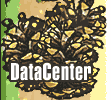The Southington Green is an oval-shaped greensward in the town center in the middle of Main Street which goes around either side to form its physical boundaries. Around it is a sidewalk. The relatively small green possibly has more monuments, signs, and landscaped flower beds and paths per square foot than any other green in the state.
Brick paths lead to the larger memorials and the bandstand. Brick is also laid underneath these objects, dividing up the green into three "zones." The focal point of the northern most zone is the memorial stone drinking trough to Amon Bradley (1918). An octagonal column rises between two troughs upon which originally stood a lighting standard with three glass globes. The light fixture has been replaced with a modern metal fixture aimed at the flagpole in the middle zone.
The focus of the middle zone is the 87 foot tall flagpole, a bandstand and Civil War Monument. On each elevation of the flagpole's tall rectangular base are bronze plaques with the names of those from Southington who fought in all the American wars through World War One. South of the flagpole is a rectangular bandstand, a recent addition that falls short of possessing the graceful lines of the original octagonal bandstand that stood on the green. To the south of it is a Civil War Memorial, a Union soldier on a tall pedestal.
In the southern-most zone is the Vietnam and World War Two memorial consisting of three large vertical stone tablets. The town signs are also situated on the green including the town historical marker, a sign board from the Parks and Recreational Department, and a large town events sign that dominates the southern tip. Many of the monuments and signs have shrubs planted around them. In addition, there are two landscaped flower beds: one at the southern and the other at the northern end. There are a few trees randomly planted throughout.
The Southington Green is the town's civic center. It is surrounded by the town hall, the police station, and the church. Just south of it is the post office. The remainder of the buildings around the green are commercial structures. Although the oldest house in Southington Center is just south of the green (it served as a tavern run by Jonathan Root who lived from 1707-1794) there is very little historic fabric remaining in the streetscape. The major exception is the Congregational Church (1828-1830) located east of the green at the corner of Main and Academy Streets. Across Academy Street from the church is the Town Hall (1941; 1972), a large red brick building built in the Georgian Revival style. The rest of the buildings (with the exception of a house in the Italianate style converted to commercial use) are from the 20th century. In addition, there are a couple of parking lots and a vacant lot bordering the green, which contribute to the uncohesive nature of the enclosure.
Although the green is readily identifiable as such to the passers by, there is no question that some of the importance of historic landscape has been lost with the construction of the newer buildings around the green.






![]()